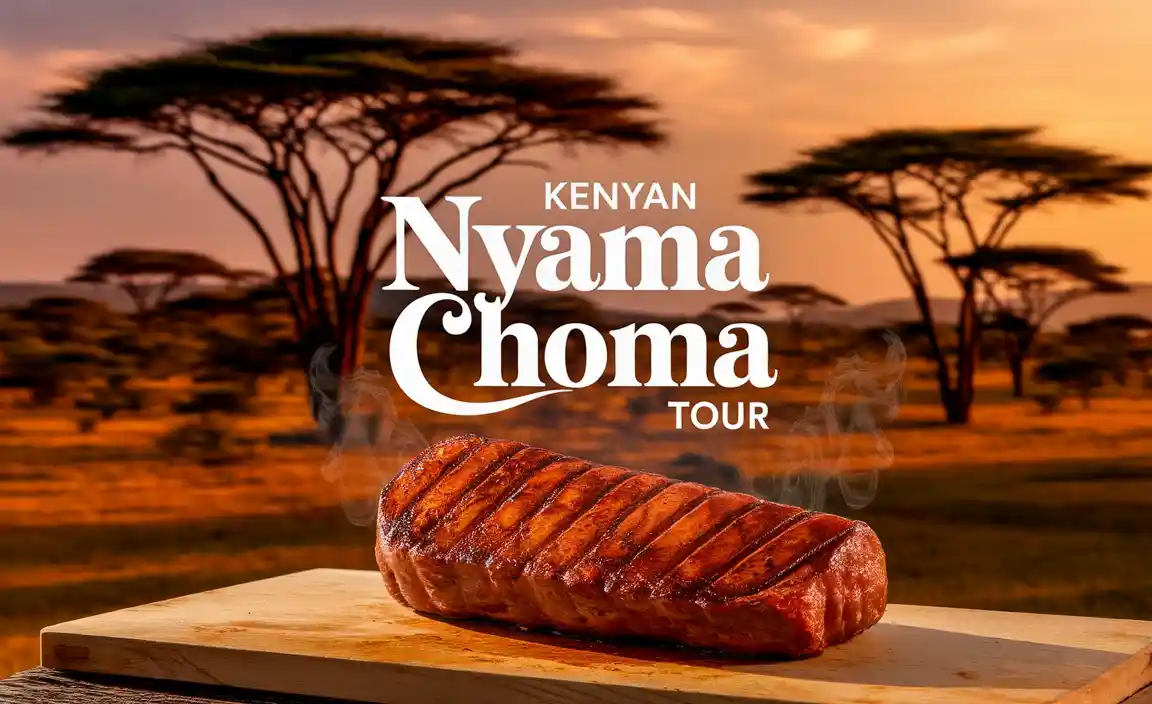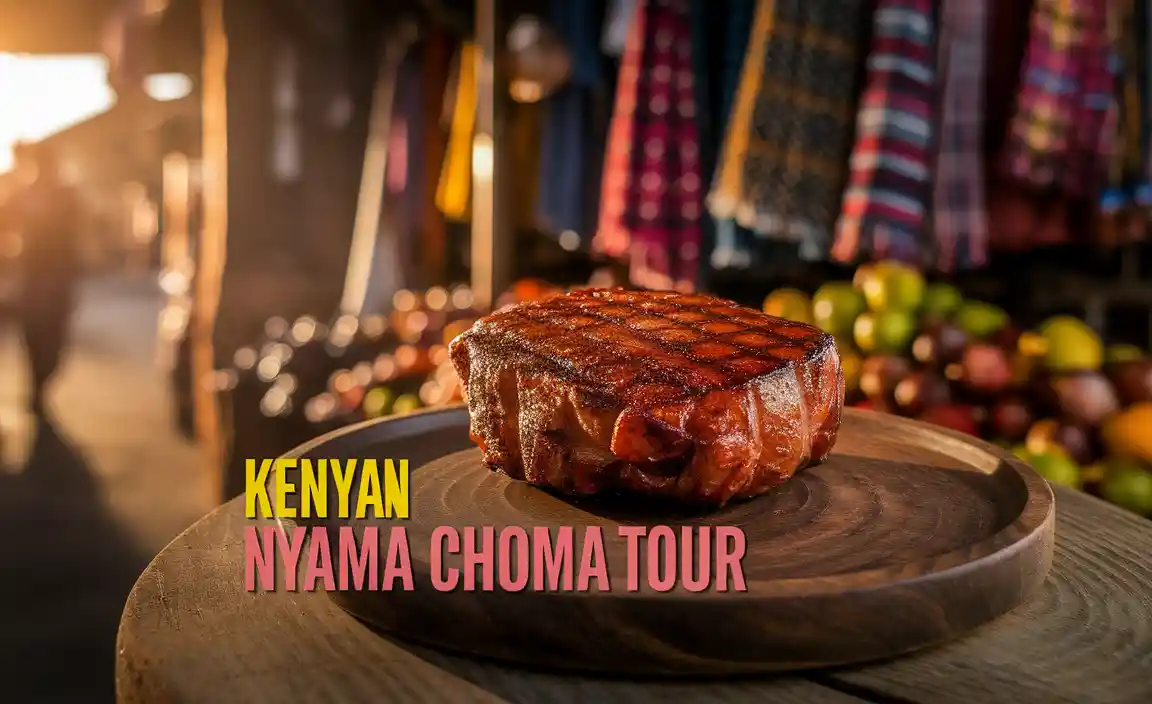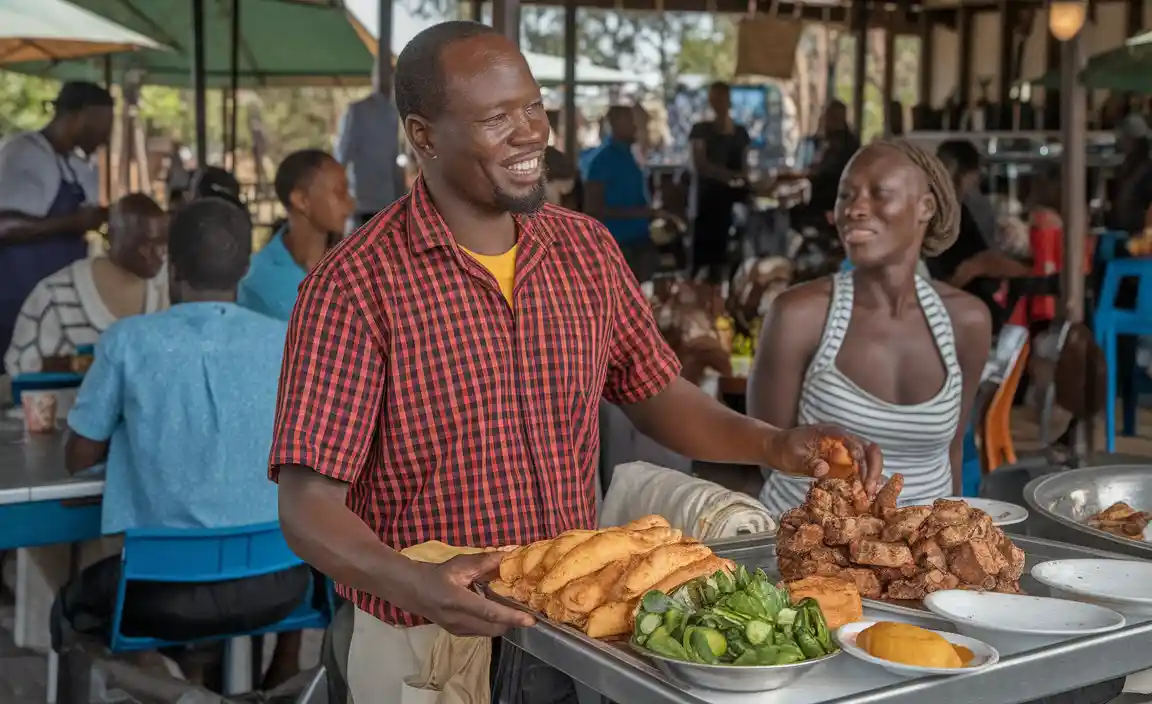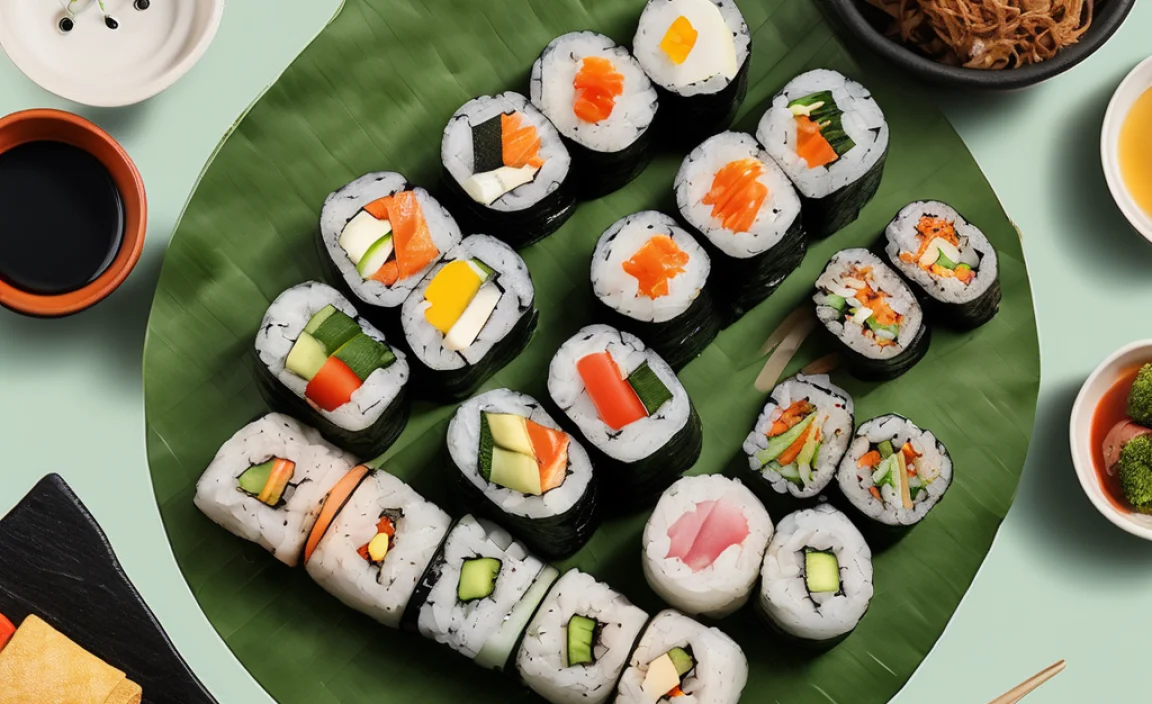Embark on a Kenyan Nyama Choma tour to savor the smoky, succulent flavors of grilled meats, expertly seasoned and cooked over open flames. This guide reveals the essential tastes and tips for experiencing authentic Kenyan barbecue, from selecting the best cuts to understanding traditional accompaniments.
Dreaming of delicious, smoky Kenyan barbecue? Wondering how to get that perfect char and mouthwatering flavor? You’re not alone! Recreating the magic of a Kenyan nyama choma experience at home or knowing what to expect on a tour can seem a bit tricky. But fear not! FoodsGuider is here to guide you. We’ll break down the essential flavors, simple techniques, and key elements that make Kenyan grilled meat a culinary adventure. Get ready to discover the secrets behind this beloved dish, making it easy for you to enjoy every bite!

Your Essential Kenyan Nyama Choma Tour: A Flavor Journey

Welcome, fellow food adventurers! Today, we’re jetting off (culinarily speaking, of course!) to Kenya for a taste of its most celebrated dish: Nyama Choma. The name itself, Swahili for “roasted meat,” promises something special. It’s more than just grilled meat; it’s a cultural experience, a social event, and a celebration of simple, robust flavors. Whether you’re planning a trip to Kenya or want to bring a taste of it home, this guide will equip you with everything you need to know to truly appreciate the essential flavors of a Kenyan Nyama Choma tour.
What Exactly is Nyama Choma?
At its heart, nyama choma is grilled meat. But oh, what meat! Typically, it’s beef or goat, though increasingly you’ll find chicken and even fish prepared in this style. The magic happens when simple, high-quality cuts are cooked over charcoal, imparting a smoky aroma and a delicious char. It’s often served in generous portions, fostering a communal eating experience that’s as much about the company as it is about the food.
The beauty of nyama choma lies in its simplicity. Unlike heavily marinated or sauced grilled meats from other cultures, Kenyan nyama choma often relies on the natural flavor of the meat, enhanced only by salt and sometimes a touch of pepper during grilling. Simplicity allows the quality of the meat and the smoky essence of the charcoal fire to truly shine through.
The Must-Try Meats on Your Kenyan Nyama Choma Tour
When you embark on a Kenyan Nyama Choma tour, you’ll quickly notice that certain cuts and types of meat are stars of the show. Here’s what to look out for:

- Beef (Nyama ya Ng’ombe): This is arguably the most popular choice. Look for cuts like ribs, brisket, or even a whole leg if you’re with a large group. The slow cooking over charcoal renders the fat, making even tougher cuts incredibly tender and flavorful.
- Goat (Nyama ya Mbuzi): A close second in popularity, goat meat offers a slightly gamier but incredibly delicious flavor. It’s often served as small, bone-in pieces, which become wonderfully tender and succulent when grilled.
- Chicken (Kuku): While less traditional for a standard nyama choma outing, grilled chicken is a common and welcome addition. It’s usually marinated simply in salt and lemon before grilling, allowing the smoky char to crisp up the skin beautifully.
- Fish (Samaki): Especially popular in coastal regions, grilled fish like tilapia or snapper, often seasoned with salt, garlic, and a hint of chili, offers a lighter but equally satisfying experience.
The Art of the Cook: Charcoal is Key
The method of cooking is as crucial as the meat itself. The quintessential nyama choma is cooked over hot charcoal. This isn’t just about heat; it’s about the unique smoky flavor and aroma that charcoal imparts.
Here’s why charcoal is king:
- Flavor Infusion: The smoke from the burning charcoal seeps into the meat, creating a distinct, irresistible aroma and taste that electric or gas grills struggle to replicate.
- Controlled Heat: Charcoal allows for excellent heat control. Grilling masters can move coals around to create hotter and cooler zones, ensuring the meat cooks evenly without burning.
- The Sear: Direct contact with hot coals creates a beautiful, crispy char on the outside of the meat, locking in the juices while developing a wonderful texture.
If you’re trying this at home, a good quality charcoal grill is your best friend. For a quick intro, even charcoal briquettes can work wonders. The key is to get them nice and hot before placing your meat on the grill.
Essential Flavors: The Simplicity Speaks Volumes
One of the most striking aspects of authentic nyama choma is its unpretentious seasoning. The goal is to let the natural flavor of the high-quality meat and the smoky char take center stage.
The core flavor profile typically consists of:
- Salt: Generous application of coarse salt is the primary seasoning. It enhances the meat’s natural flavors and helps create a desirable crust.
- Pepper: Black pepper is often used alongside salt, adding a subtle warmth and kick.
- The “Secret” Ingredient: Patience and Fire! While not a spice, the slow cooking over charcoal and the patience of the grill master are what truly develop the depth of flavor.
You might encounter some variations where chefs rub the meat with garlic, ginger, or a smear of tomato paste before grilling, but these are often regional or personal touches. The foundation remains salt and pepper, allowing the smoky goodness to dominate.
Key Accompaniments: What to Eat with Your Nyama Choma
Nyama choma is rarely eaten alone. It’s a feast, and no feast is complete without its supporting cast of delicious sides. These accompaniments balance the richness of the meat and complete the Kenyan culinary experience.
Here are the must-haves:
| Accompaniment | Description | Why it Works |
|---|---|---|
| Ugali | A stiff porridge made from maize (corn) flour, cooked with water to a firm consistency. | Its neutral, slightly grainy texture is perfect for scooping up meat juices and is a staple that balances the meal. |
| Kachumbari | A fresh tomato and onion salsa, often with chilies and cilantro. | The acidity and freshness cut through the richness of the meat, providing a bright, zesty contrast. |
| Sukuma Wiki | Collard greens (or kale) sautéed with onions, tomatoes, and sometimes a little garlic. | A healthy, flavorful green that adds essential vitamins and a delicious earthy note to the meal. |
| Chapati | A layered flatbread, similar to Indian roti or paratha, cooked on a griddle. | Perfect for soaking up gravies or juices and adds a delightful chewy texture. |
| Mokimo | Mashed potatoes mixed with mashed green peas and corn, often with a hint of chopped greens. | A hearty, filling, and flavorful starch that is deeply satisfying alongside grilled meats. |
Where to Experience Authentic Nyama Choma
If you’re planning a trip, you’re in for a treat! Kenyan nyama choma joints are legendary. They range from informal roadside stalls to upscale restaurants. Here are some types of places to seek out:
- Local “Choma Zones”: These are often open-air markets or dedicated areas where you can choose your raw meat, watch it being grilled, and enjoy it with the locals. Nairobi’s popular spots include Kilimani, Dagoretti Corner, and areas around Westlands.
- Restaurants: Many restaurants, from casual eateries to finer dining establishments, offer nyama choma as a signature dish. Look for places known for their grilled meats.
- Roadside Grills: Especially outside major cities, you’ll find humble roadside grills that serve up incredible nyama choma, often with a loyal local following.
For those planning a visit, consider booking a guided food tour. Companies often partner with reputable local eateries and can take you to the best spots, ensuring an authentic and safe culinary adventure. A good tour guide can also explain the cultural significance of the food and the dining etiquette associated with it.
Tips for Your Home Nyama Choma Adventure
Can’t make it to Kenya just yet? No problem! You can recreate that amazing nyama choma flavor in your own backyard. Here’s how to get started:

- Choose Your Meat Wisely: Opt for good quality beef (like ribs, flank steak, or sirloin) or lamb chops. For fattier cuts, scoring them lightly can help render the fat.
- Embrace the Charcoal: If you have a charcoal grill, use it! Get it nice and hot. You want serious heat for searing. If using a gas grill, get it as hot as possible and use wood chips (soaked in water for about 30 minutes) in a smoker box or foil packet for that smoky essence.
- Simple Seasoning: Generously salt your meat with coarse sea salt. Add freshly ground black pepper. That’s it! Let the meat’s quality and the grill do the work.
- Don’t Overcrowd the Grill: Give your meat space to breathe and sear properly. Cook in batches if necessary.
- Patience is a Virtue: Let the meat cook without fussing too much. Flip only when it’s ready. Aim for that beautiful char on the outside and a juicy interior. For beef, medium-rare to medium is often ideal.
- Prepare Your Sides: Make your kachumbari and ugali (or even mashed potatoes and sautéed kale) while the meat is resting.
A quick tip for preparing kachumbari at home: finely chop ripe tomatoes and red onions. Add finely chopped cilantro, a diced green chili (if you like a bit of heat), and a squeeze of lime juice. Season with salt and a tiny pinch of sugar if your tomatoes aren’t sweet enough. Let it sit for at least 15 minutes for the flavors to meld.
The Cultural Significance of Nyama Choma
Nyama Choma is more than just food; it’s a cultural cornerstone in Kenya. It’s the centerpiece of celebrations, family gatherings, and friendly get-togethers. The act of gathering around a fire, sharing food, and engaging in lively conversation is deeply ingrained in Kenyan social fabric.
This communal aspect is vital:
- Social Bonding: Sharing a platter of nyama choma fosters a sense of togetherness and strengthens relationships.
- Celebration: From weddings to holiday feasts, nyama choma is a celebratory dish that signifies prosperity and joy.
- Hospitality: Offering nyama choma to guests is a sign of warm hospitality and respect.
Understanding this cultural context adds another layer of richness to your experience, whether you’re in Kenya or trying to replicate it at home. Consider it an invitation to shared joy and delicious food.
Frequently Asked Questions About Kenyan Nyama Choma
What internal temperature should nyama choma reach?
For beef, aim for an internal temperature of around 57-60°C (135-140°F) for medium-rare, or 63-65°C (145-150°F) for medium. For goat and chicken, it’s best to cook thoroughly to 74°C (165°F) for safety.
Is nyama choma spicy?
Traditionally, authentic nyama choma is not spicy. The flavor comes from the meat and smoky char. However, kachumbari often includes chili for a fresh kick, and some home cooks or restaurants might add chili to the meat itself.
What is the most common meat used for nyama choma?
Beef is the most common and beloved meat for nyama choma. Goat meat is also very popular and considered a delicacy by many.
Can I make nyama choma indoors?
Yes, you can! While charcoal is ideal, you can achieve a good smoky flavor indoors using a cast-iron grill pan on high heat and adding a few drops of liquid smoke to the meat just before grilling, or by using smoked paprika. Alternatively, a broiler can mimic some of the charring effect.
What’s the difference between nyama choma and other grilled meats?
The primary difference lies in its preparation and flavor emphasis. Nyama choma typically uses minimal seasoning (salt and pepper are key) and relies heavily on the smoky flavor from charcoal grilling, allowing the natural taste of the meat to dominate. Many other grilled meats involve marinades or complex rubs.
How is ugali traditionally eaten with meat?
Ugali is usually formed into a ball or cone shape in your hand, then you use it to scoop up pieces of meat, gravy, or the accompanying stew/greens. It’s a hands-on eating experience!
Are there vegetarian options similar to nyama choma?
While not traditional ‘nyama choma’, many Kenyan eateries now offer grilled halloumi cheese, mushrooms, or vegetable skewers seasoned and grilled over charcoal, providing a smoky, charred flavor experience for vegetarians.
Conclusion: Savoring the Spirit of Kenya
Embarking on a “Kenyan Nyama Choma Tour” is truly an exploration of flavor, culture, and community. From the simple yet profound taste of perfectly grilled beef or goat kissed by charcoal smoke, to the vibrant freshness of kachumbari and the comforting heartiness of ugali, every element plays a crucial role in this quintessential Kenyan experience. Whether you’re savoring it from a bustling roadside grill in Nairobi or recreating the magic in your own backyard, remember that the essence of nyama choma lies in its unpretentious preparation, the quality of the ingredients, and the joy of sharing a delicious meal with loved ones.
We hope this guide has ignited your appetite for Kenyan cuisine and inspired you to try making your own nyama choma at home or to seek it out on your next culinary adventure. Keep exploring, keep cooking, and most importantly, keep savoring every flavorful bite!


